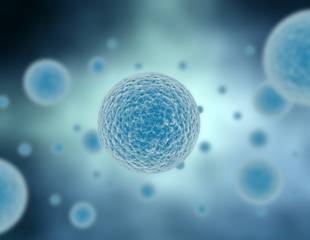What happens to our cells when cancer develops?
In a healthy human body, different cells pull together for the common good. In its simplest terms, cancer is a disease that develops when this cooperation breaks down. Instead of being team players, some cells go their own way, leading to uncontrolled growth. They intrude on and destroy adjacent cells and tissues. Sometimes these unregulated cells spread to distant parts of the body (metastasis), where they intrude on and destroy other cells and organs.
In most cases, what transforms healthy, cooperative cells into unconstrained cancer cells are changes in their DNA programming. Alterations (hits) at several different points over a cell’s lifetime are required to knock it off the rails, which is why time is ultimately the greatest enemy. These changes may occur as random errors as cells duplicate.
A number of external factors (carcinogens) may also damage the DNA sequence and generate a cancer. Common factors include tobacco smoke, radiation, oxidative stress, dietary toxins, pollution and infections. There are many factors that normally act to prevent DNA damage. If these are also deficient, as happens when we age, cancers are more likely to occur.
Here is a brief description on how we can prevent two of the most common types of cancers:
Preventing Lung Cancer
Lung cancer is the most common cause of cancer-related deaths in men and it is on the increase for women. Like the skin, the surface of the lungs has a high degree of exposure to the outside environment, so it is highly susceptible to inhaled carcinogens. By far the most damaging carcinogens are those in cigarette smoke, whether inhaled from smoking or passive smoking. Avoiding cigarette smoke is the only effective way to prevent lung cancer. Encourage others around you to do the same.
Preventing Breast Cancer
For women, breast cancer is the leading cause of cancer deaths. One in eight women will develop breast cancer at some time in their life, most often after the age of 60. However, prevention is possible. Increased awareness, earlier detection and improved treatment have resulted in declining death rates from breast cancer.
One important action a woman can take to prevent breast cancer is to perform regular screening to facilitate early detection of lesions. The most widely used test is mammography, where close-up x-ray pictures are taken of each breast from several angles while it is gently compressed onto a flat surface.
Most cancers can be detected in this way. It is recommended that all women over the age of 40 undergo a yearly mammogram and continue to do so for as long as they are in good health. In the absence of a strong family history, women under this age have lower rates of breast cancer, making screening less valuable.
Women who have a family history or are at a higher risk of breast cancer should consider magnetic resonance imaging (MRI). This is a more detailed procedure and can detect cancers at an even earlier stage. While regular self-examination is not a substitute for mammography or other screening tests, it is valuable in detecting some types of breast cancer and it also helps foster awareness.
Last Reviewed 02/Mar/2014
Dr Merlin Thomas
Latest posts by Dr Merlin Thomas (see all)
- How to increase DHEA levels - 28/09/17
- Testosterone supplement benefits & risks - 11/07/17
- Health effects of tea & coffee - 10/07/17
